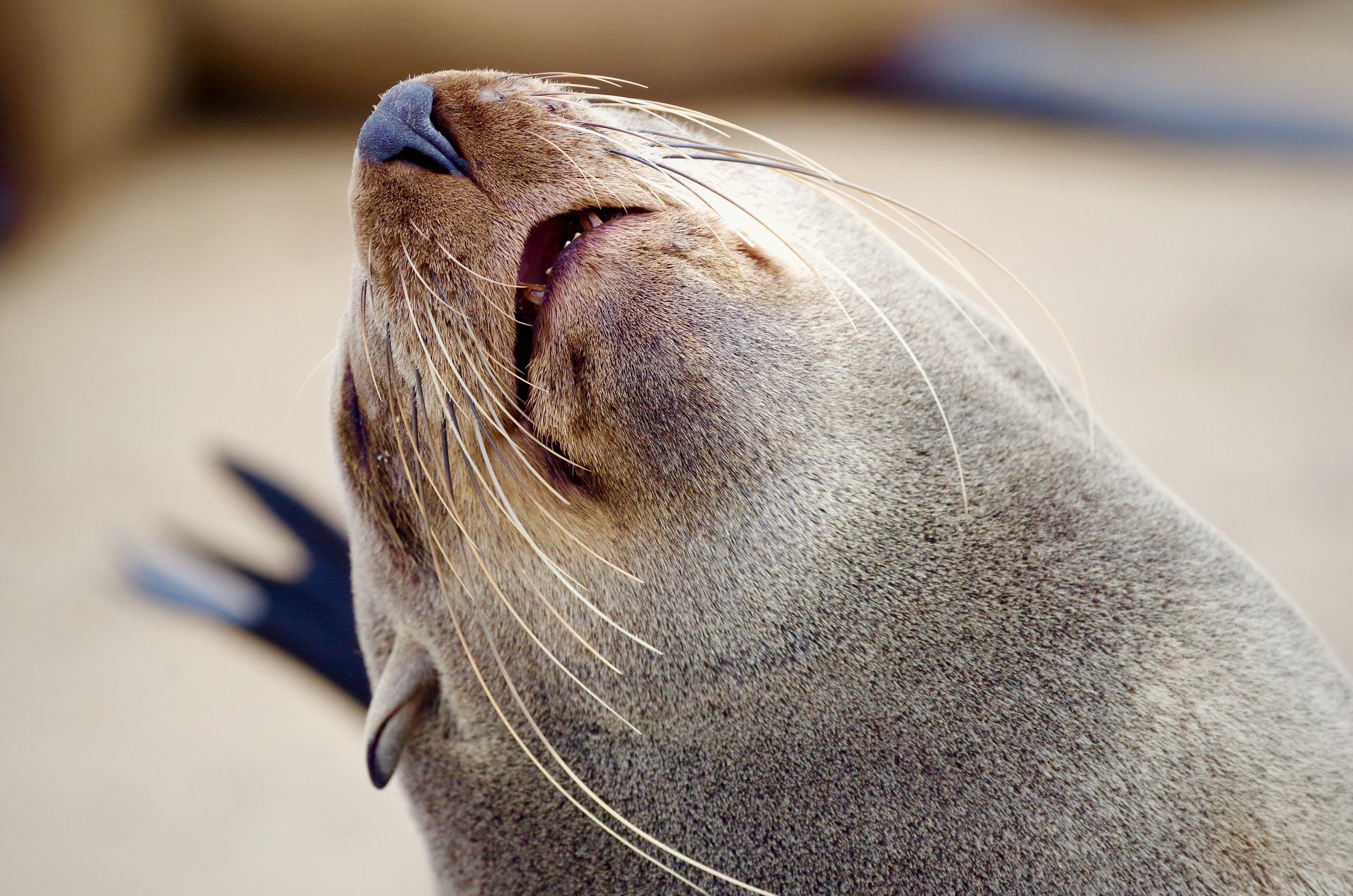


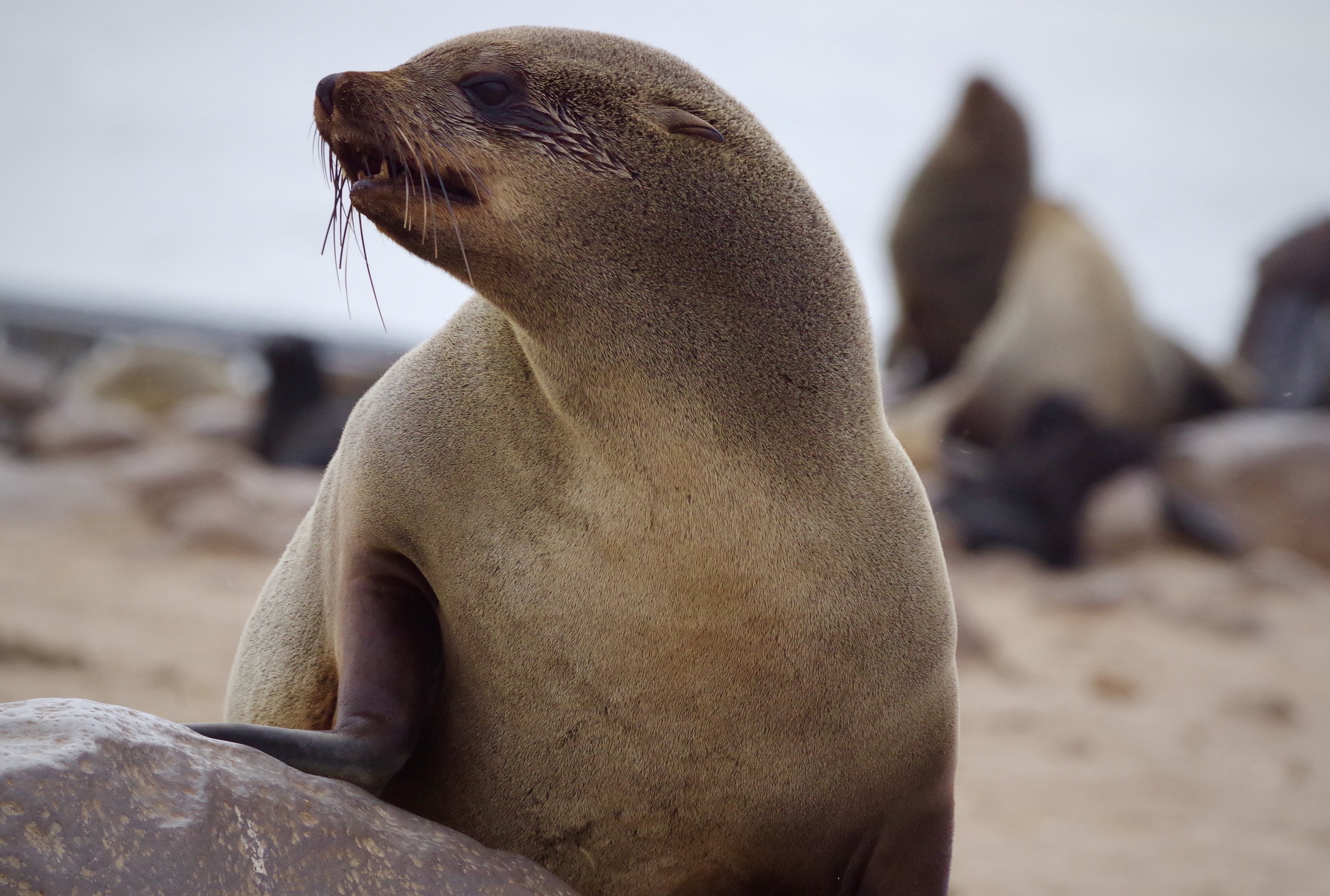
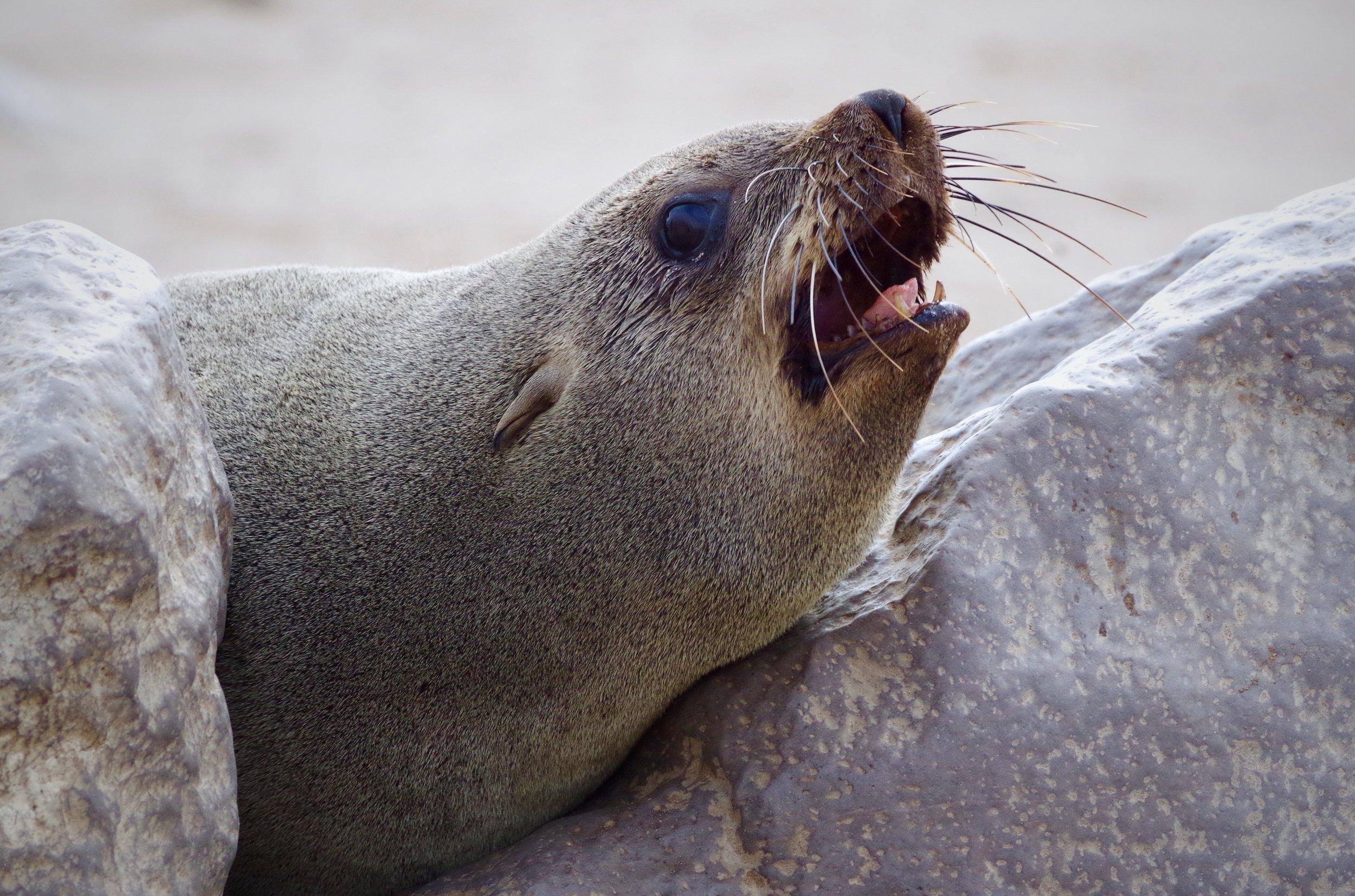

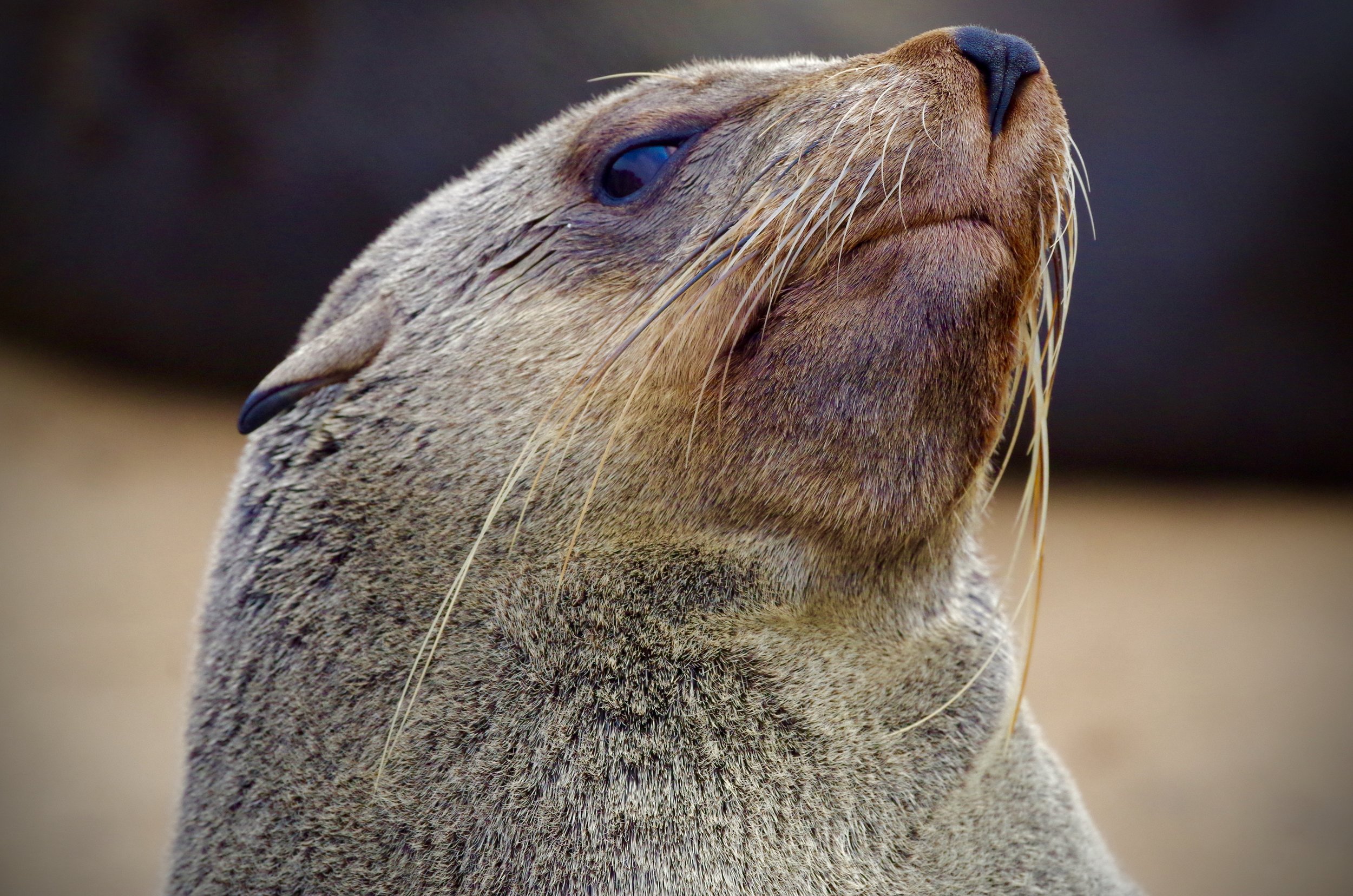
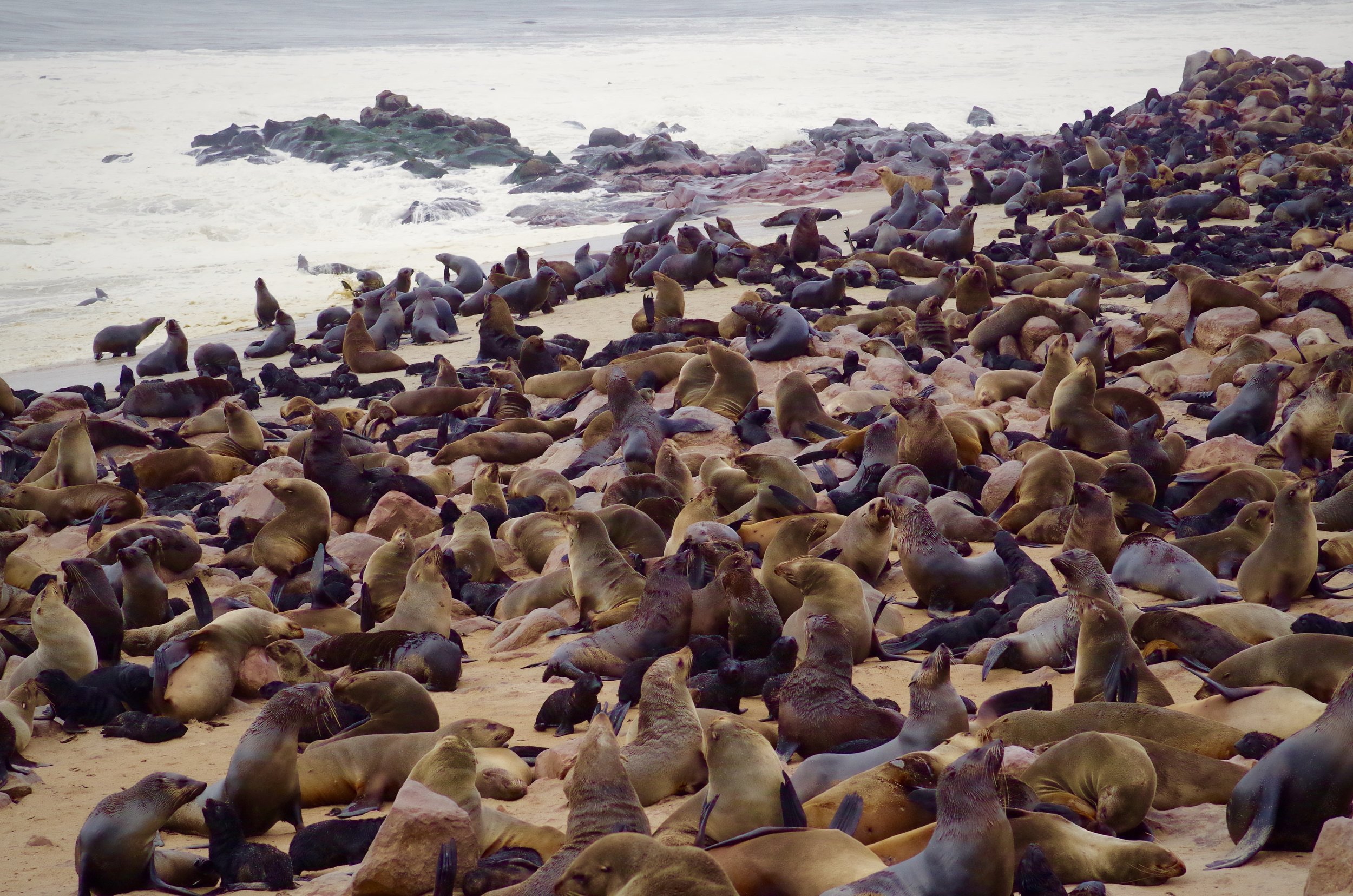
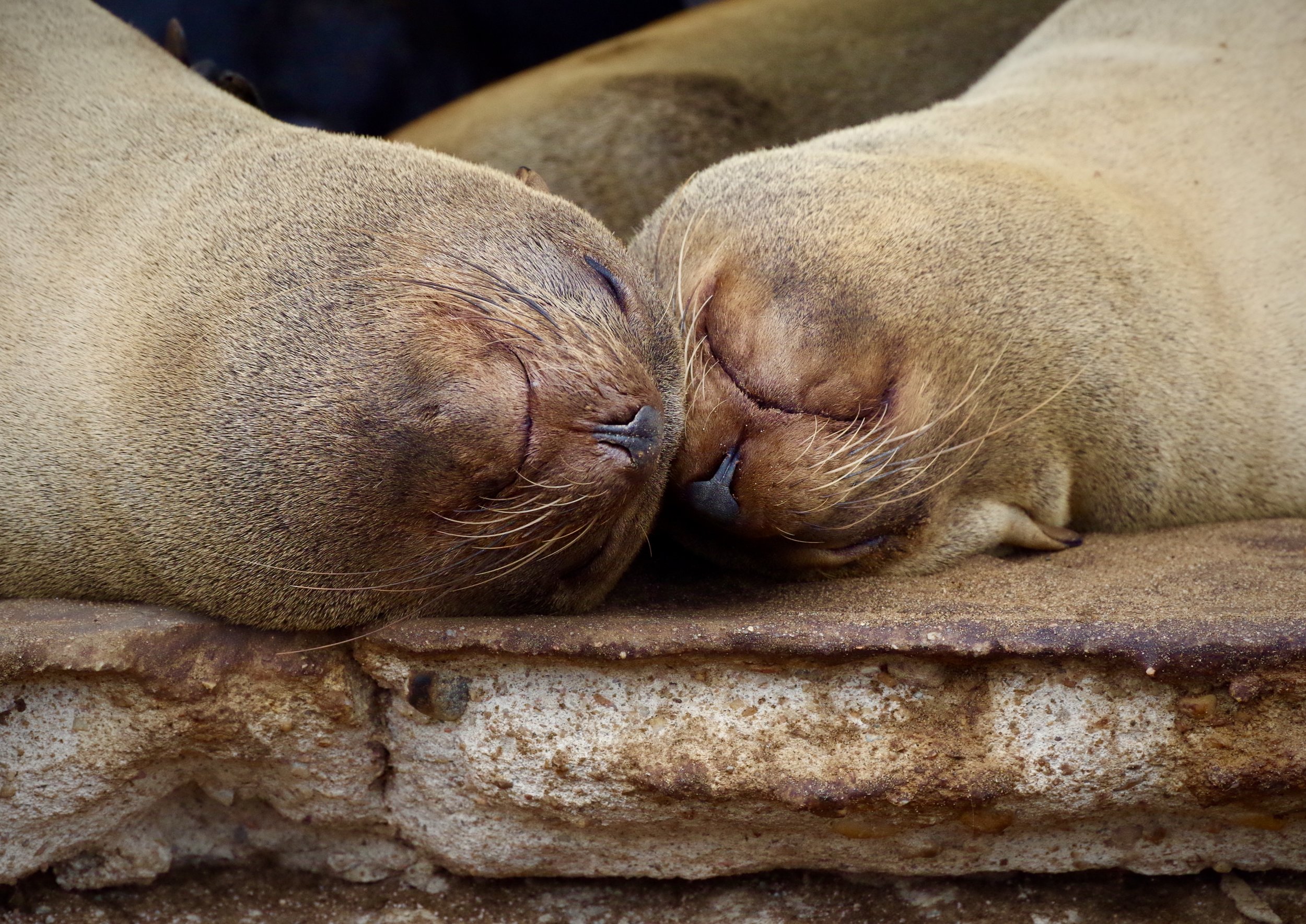
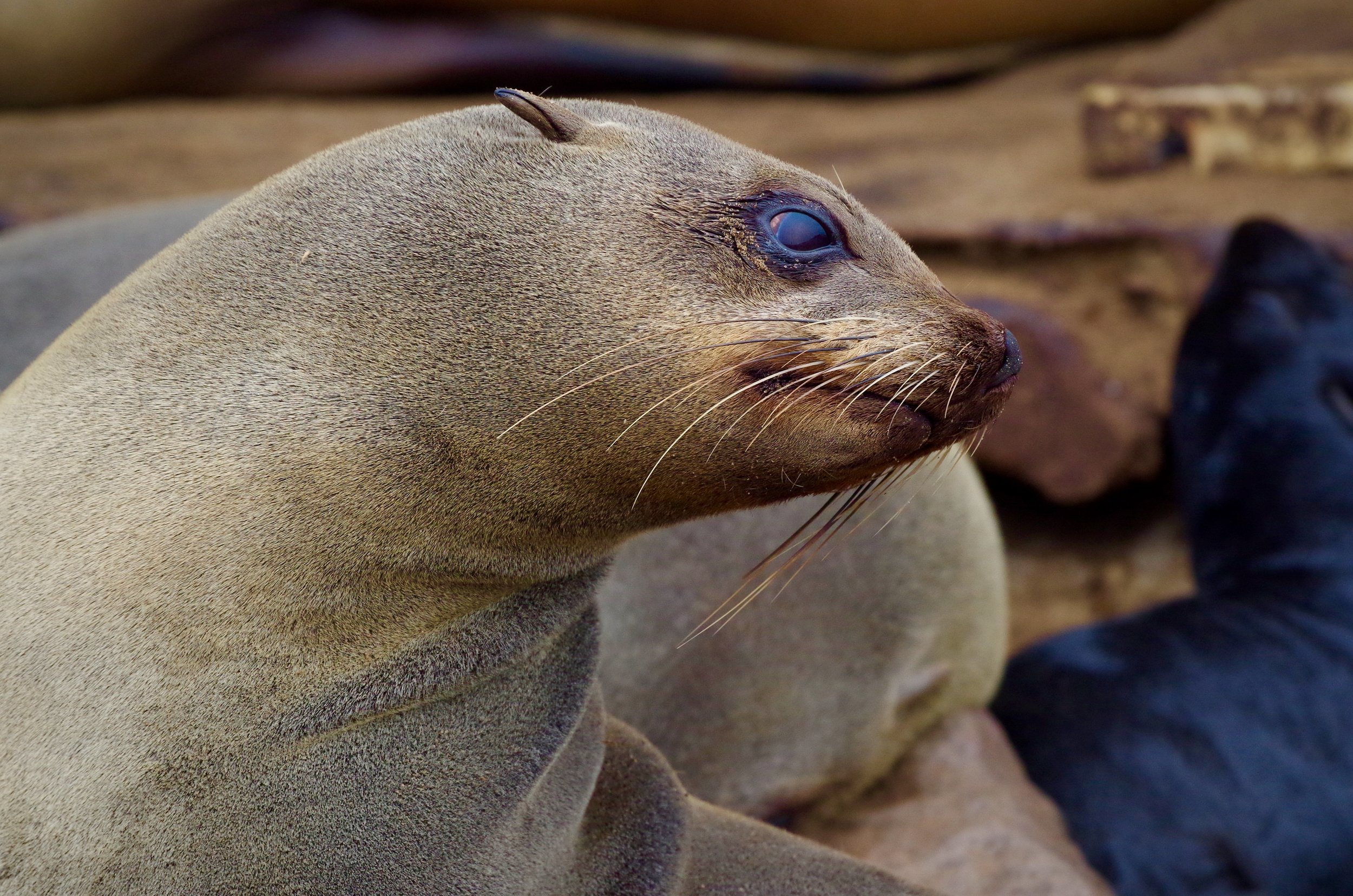


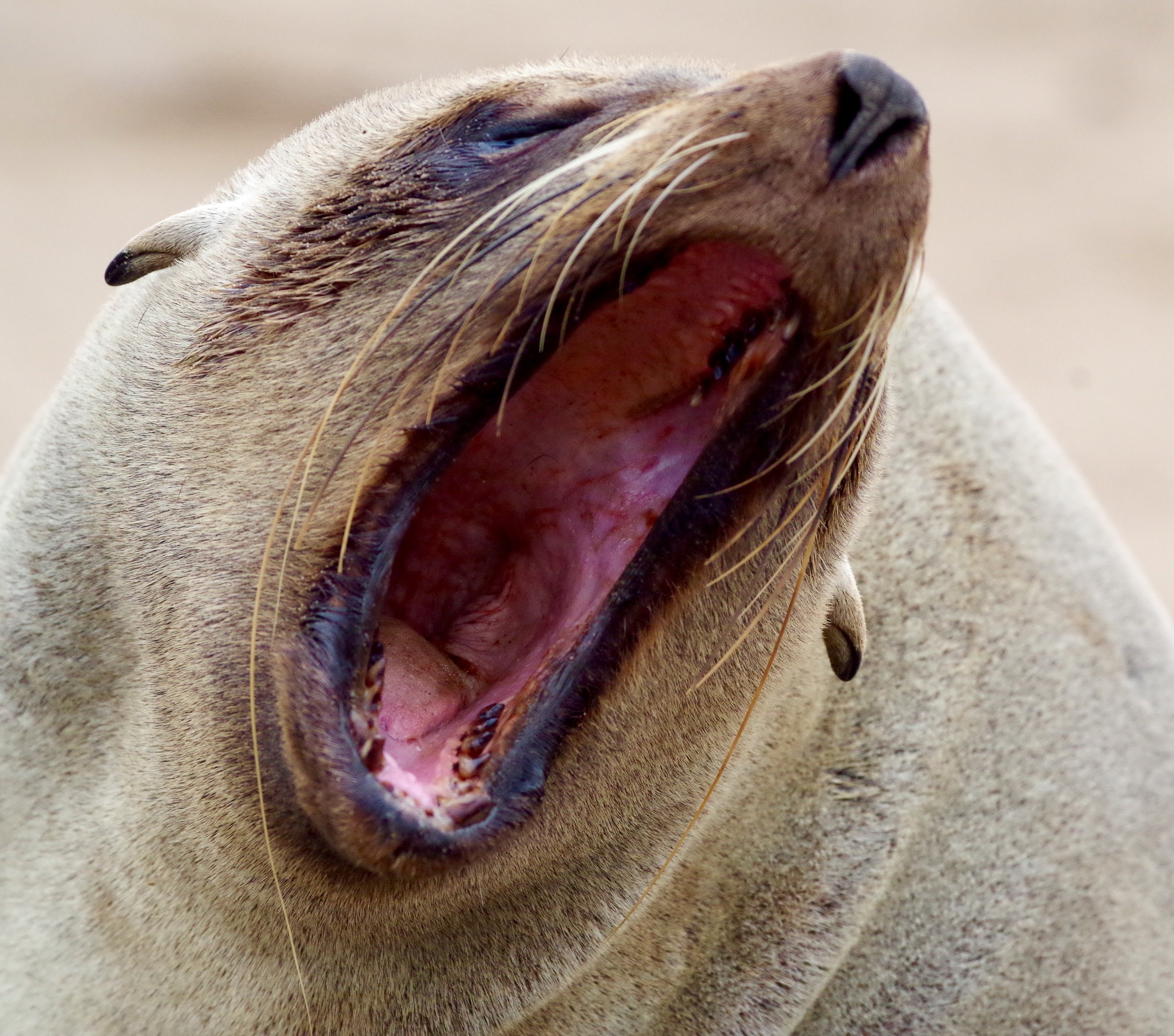
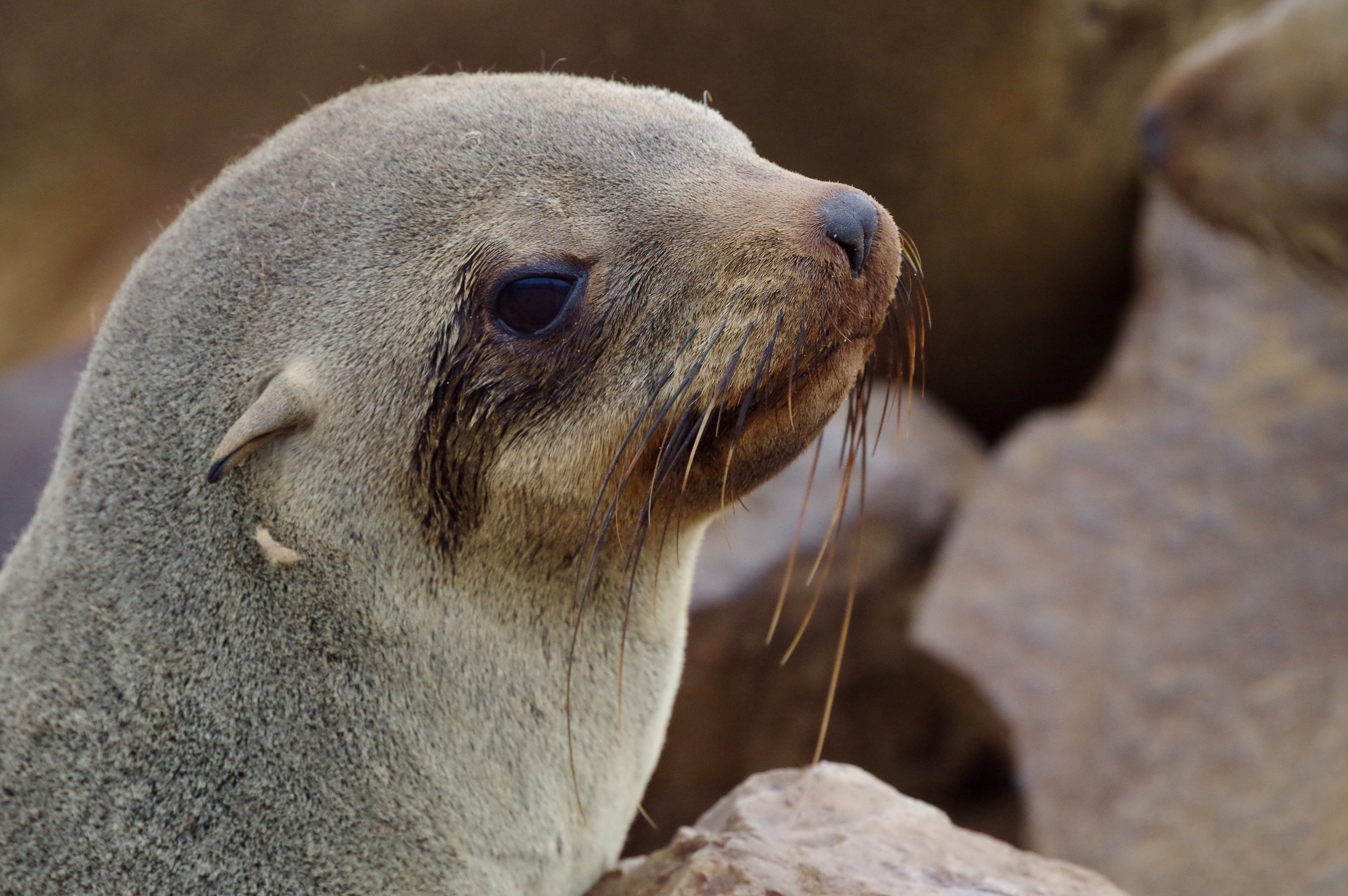
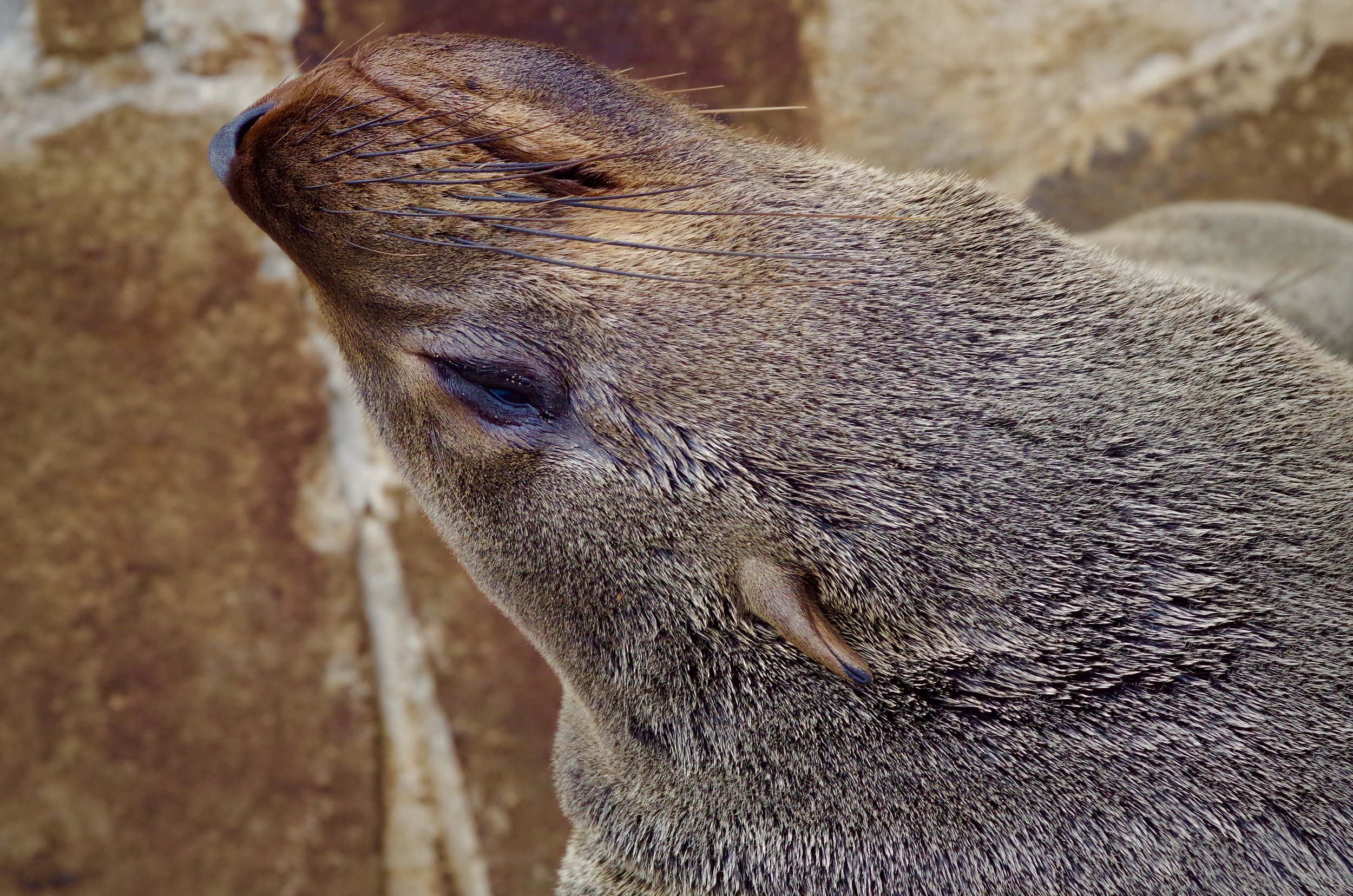
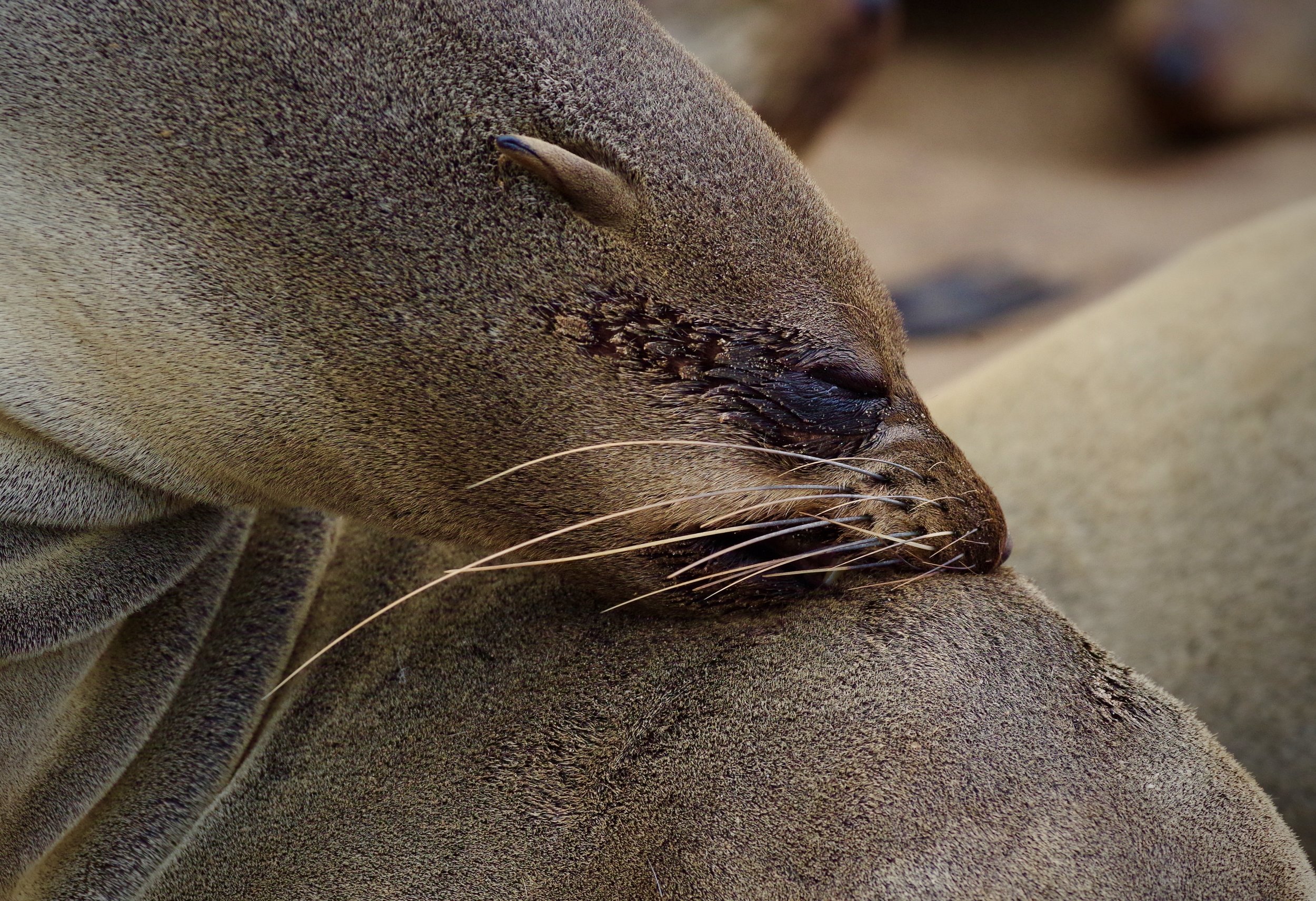

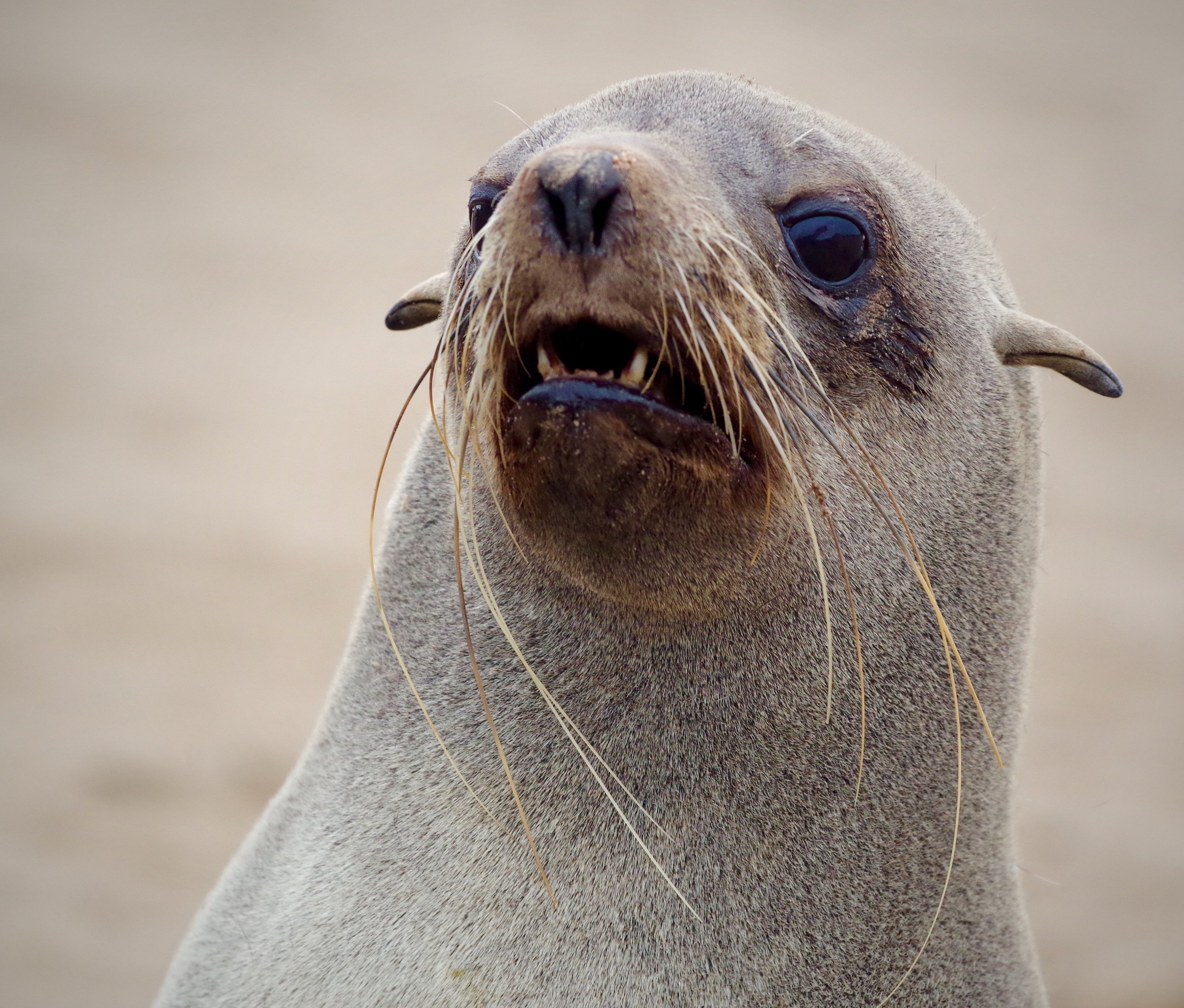
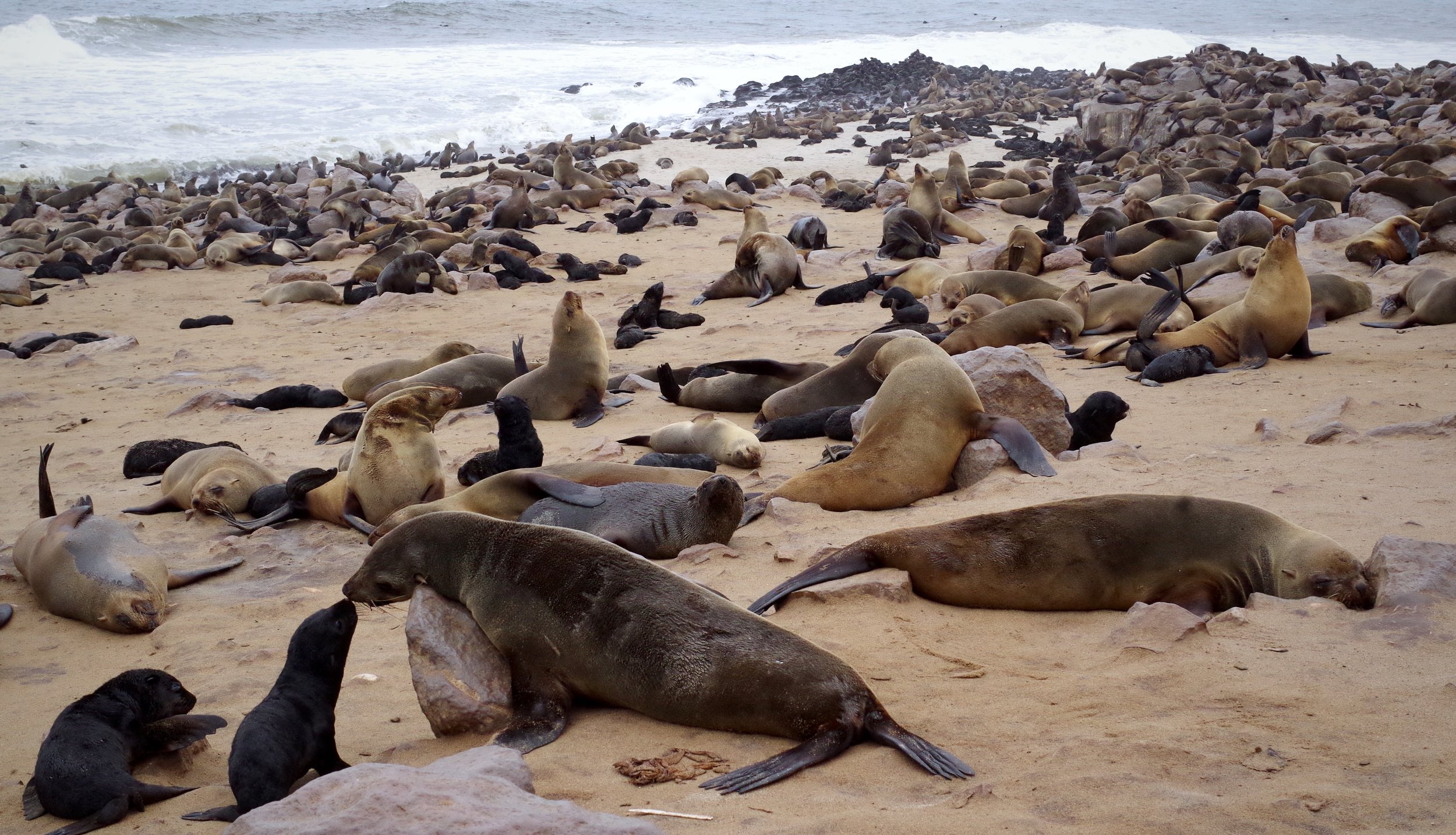

An Eye for Fish
The African fur seal's diet is made of up to 70% fish, 20% squid, and 2% crab. They also eat other crustaceans, cephalopods and sometimes birds.

An Impressive Range
The African fur seal lives around the southern and southwestern coast of Africa from Cape Cross in Namibia and around the Cape of Good Hope to Black Rocks near Port Elizabeth in the Eastern Cape province.

Call Across The Waves
Cape fur seals have loud barking calls. Every pup learns to respond to his mother’s call for safety.

Vocalizing
Fur seals are social animals that use vocalizations in a broad range of contexts. These vocalizations contain unique properties important for enabling individual recognition.

Thick Coat
A fur seal typically has a large and broad head with a pointed snout that may be flat or turned up slightly. They have external ear flaps (pinnae) and their whiskers (vibrissae) are long, and may extend backward past the pinnae, especially in adult males.

The Colony
Brown fur seals prefer to haul out and breed on rocky islands, rock ledges and reefs, and pebble and boulder beaches. However, some large colonies can be found on sandy beaches. Fur seals spend most of the year at sea, but are never too far from land.

Checking for Danger
This species is an inquisitive and friendly animal when in the water, and often accompanies scuba divers. They swim around divers for periods of several minutes at a time, even at a depth of 60 m. On land, they are far less relaxed and tend to panic when humans come near them.

Female Fur Seal
Females within a male's territory can be considered part of his harem. However, males do not herd the females, which are free to choose their mates and judge them based on the value of their territories.

Young Mother
True boundaries do not exist between the colonies. When at sea, they travel in small feeding groups. Brown fur seals begin to breed in the middle of October, when males haul out on shore to establish territories though display, vocalisations, sparring, and sometimes actual combat.

Inquisitive Look
The brown fur seal's main predator is the great white shark, although they are also preyed upon by various other animals, such as killer whales and vagrant southern elephant seals. Land-based predators include black-backed jackals and brown hyenas on the Skeleton Coast in Namibia.

Family Life
A mother seal and her pup touch noses in this large fur seal colony on Namibia’s Skeleton Coast.
